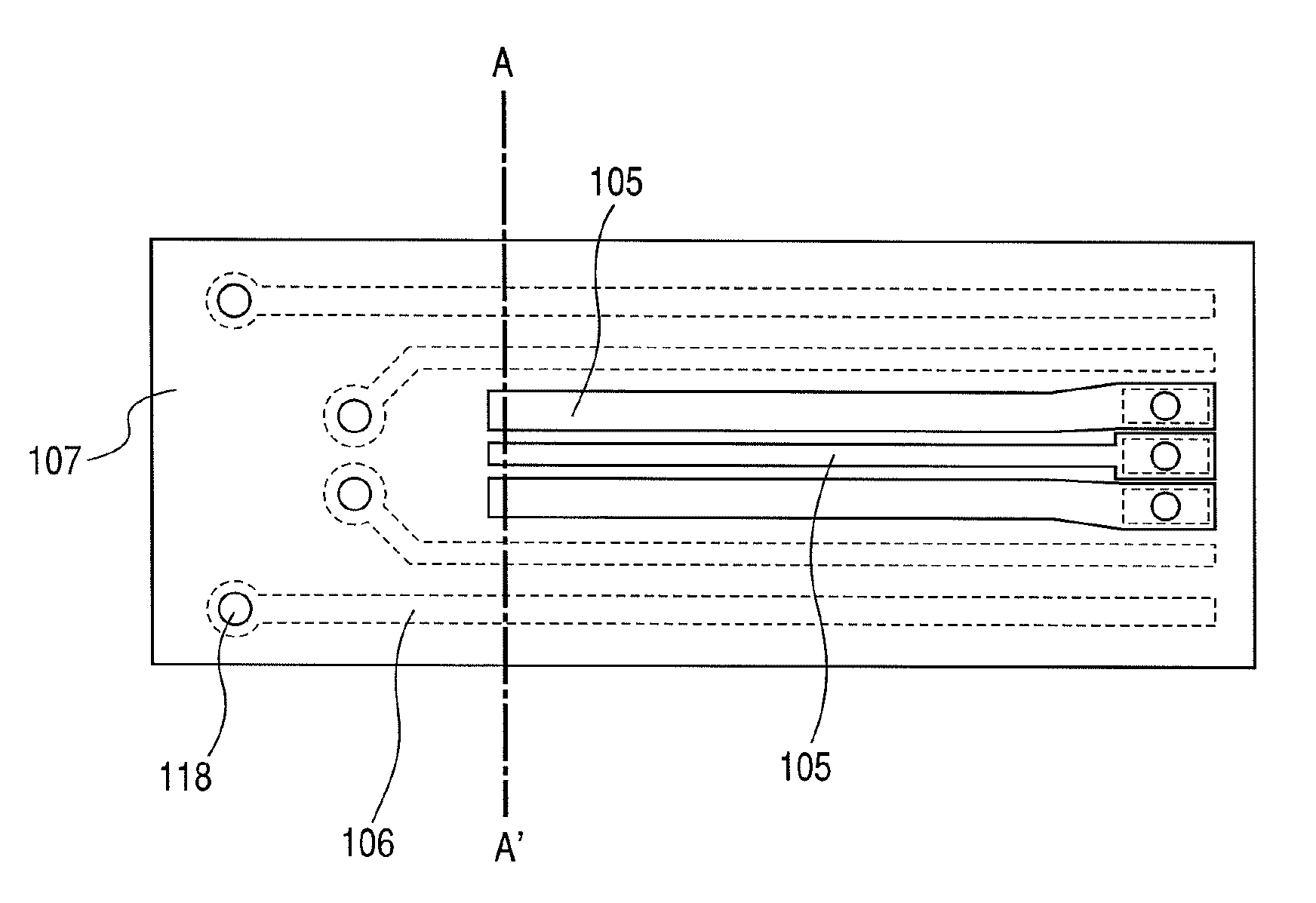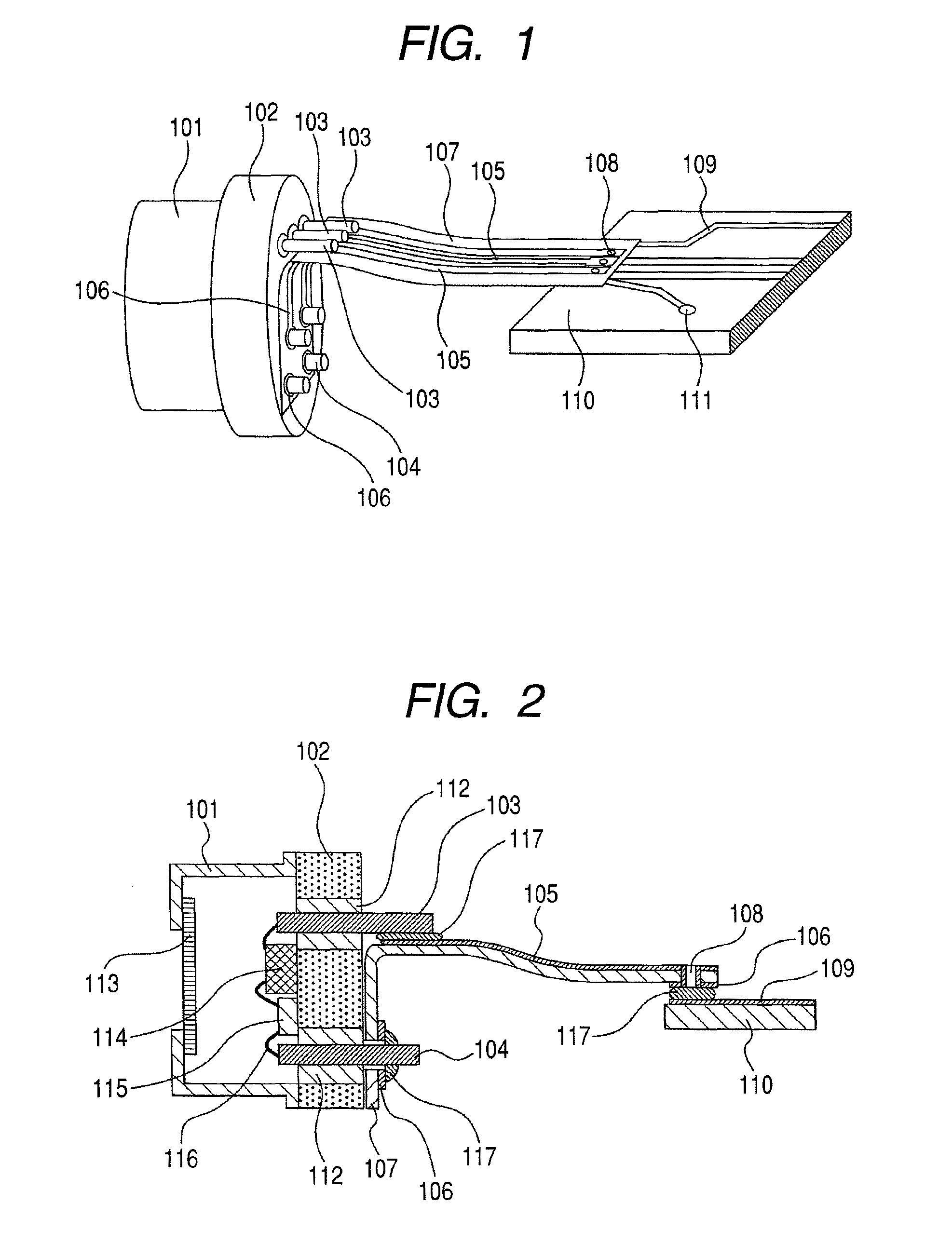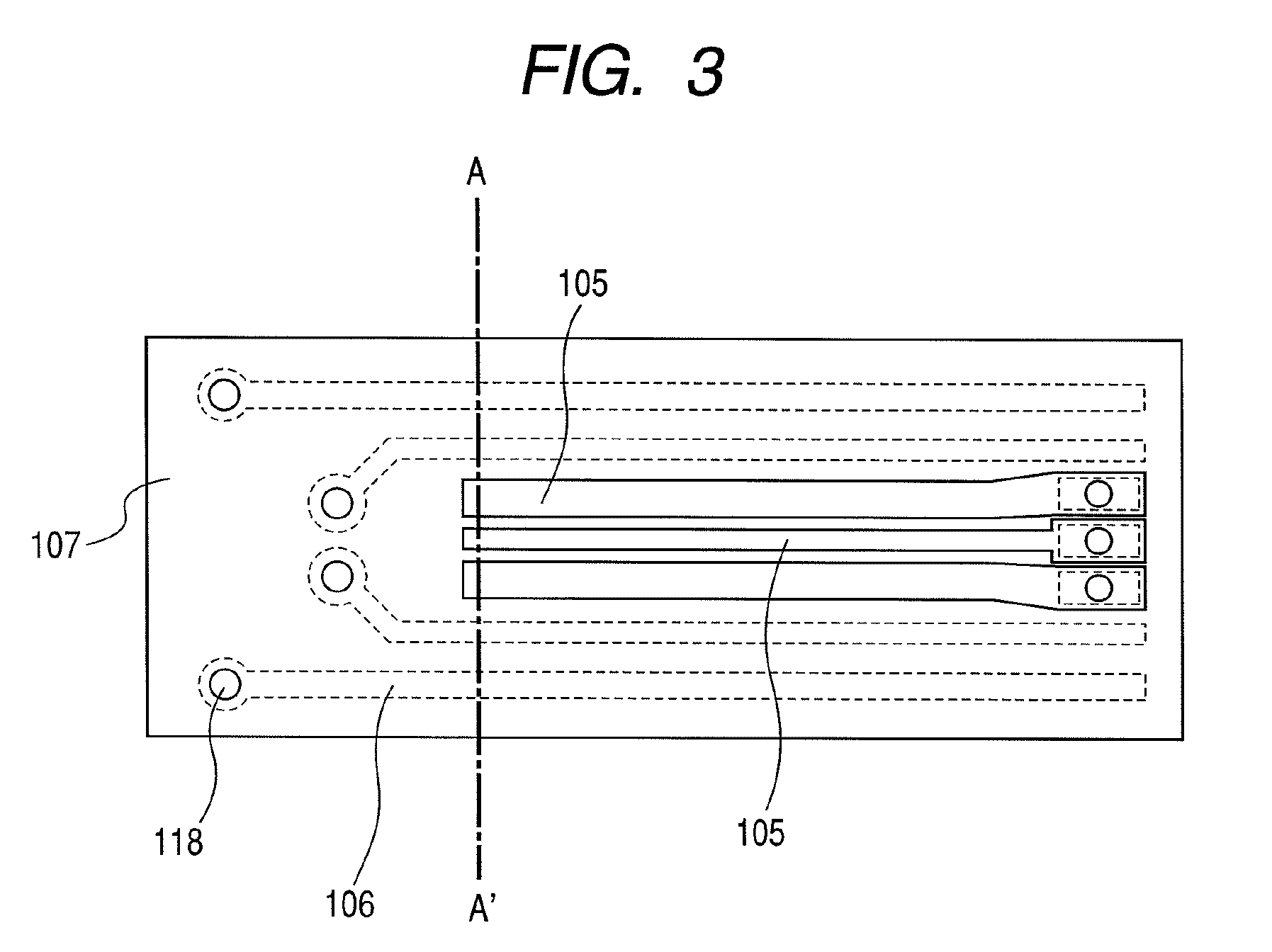Optical semiconductor device with flexible substrate
a technology of optical semiconductor and flexible substrate, which is applied in the direction of semiconductor lasers, cross-talk/noise/interference reduction, etc., can solve the problems of prone to mismatch in characteristic impedance, no longer applicable to optical transceivers, and the withdrawal of conventional optical semiconductor devices. , to achieve the effect of reducing the high-frequency signal
- Summary
- Abstract
- Description
- Claims
- Application Information
AI Technical Summary
Benefits of technology
Problems solved by technology
Method used
Image
Examples
first embodiment
[0043]FIG. 1 is a perspective view schematically showing a first embodiment of an optical semiconductor device according to the invention, and a printed wiring board 110. The optical semiconductor device, and the printed wiring board 110 are components constituting an optical transceiver. FIG. 2 is a sectional view of the optical semiconductor device in FIG. 1, and FIG. 3 is a top view of a flexile substrate 107 only.
[0044]As shown in FIGS. 1 and 2, with a CAN type optical package, an optical element 115 is hermetically sealed with a lid 101 provided with a stem 102 and a window 113. An electronic element 114, and an optical element 115 are mounted on the stem 102, and wiring 116 is connected to respective spots where electrical connection is required, including first lead pins 103 and second lead pins 104, respectively. An insulator 112 is interposed between the stem 102 and each of the first lead pins 103 as well as each of the second lead pins 104. However, if a part of the lead ...
second embodiment
[0051]FIG. 4 is a top view of a flexile substrate 107 of an optical semiconductor device according to a second embodiment of the invention. The optical semiconductor device has an advantage in that the flexile substrate 107 is bent at a crease along line A-A′ in the figure, but the flexile substrate 107 can be bent with greater ease because the same is provided with a first notch 201 and a second hole 202. FIG. 5 is a sectional view of the flexile substrate 107, taken on line B-B′ of FIG. 4, and FIG. 6 is a sectional view of the flexile substrate 107, taken on line C-C′ of FIG. 4. With the flexile substrate 107, first metal patterns 105, and second metal patterns 106 are usually patterned on a base film 204, a resin layer 203 protecting the first metal patterns 105, and the second metal patterns 106, respectively. The base film 204, and the resin layer 203 each are composed of an organic matter such as resin including polyimide, and so forth. Further, a through-hole 108 with an inne...
third embodiment
[0052]FIG. 7 is a top view of a flexile substrate 107 of an optical semiconductor device according to a third embodiment of the invention. A metal pattern 301 for power supply or grounding, large in width, is patterned on the rear surface of the flexile substrate 107. Respective ends of first metal patterns 105, and an end of a metal pattern 301 for power supply or grounding are positioned in the vicinity of a crease along line A-A′ in the figure. A constituent material of the flexile substrate 107 is generally softer than that of the metal patterns. For this reason, if the end of such a metal pattern large in width is positioned in the vicinity of the crease along line A-A′, the flexile substrate 107 has an advantage in that it can be bent with greater ease.
PUM
 Login to View More
Login to View More Abstract
Description
Claims
Application Information
 Login to View More
Login to View More - R&D
- Intellectual Property
- Life Sciences
- Materials
- Tech Scout
- Unparalleled Data Quality
- Higher Quality Content
- 60% Fewer Hallucinations
Browse by: Latest US Patents, China's latest patents, Technical Efficacy Thesaurus, Application Domain, Technology Topic, Popular Technical Reports.
© 2025 PatSnap. All rights reserved.Legal|Privacy policy|Modern Slavery Act Transparency Statement|Sitemap|About US| Contact US: help@patsnap.com



